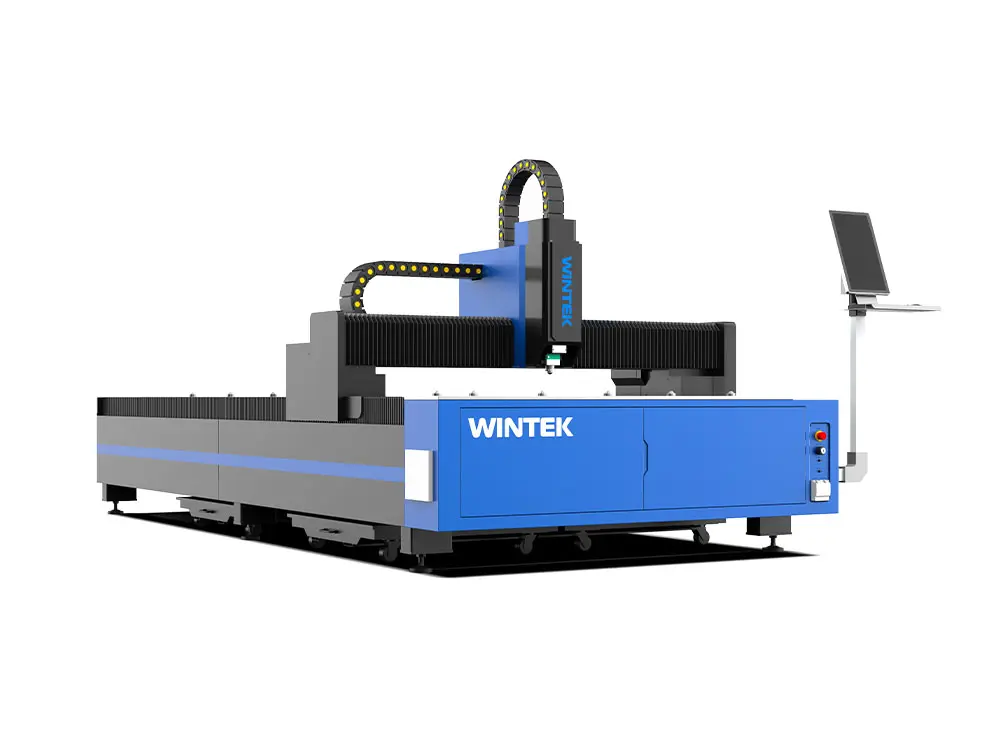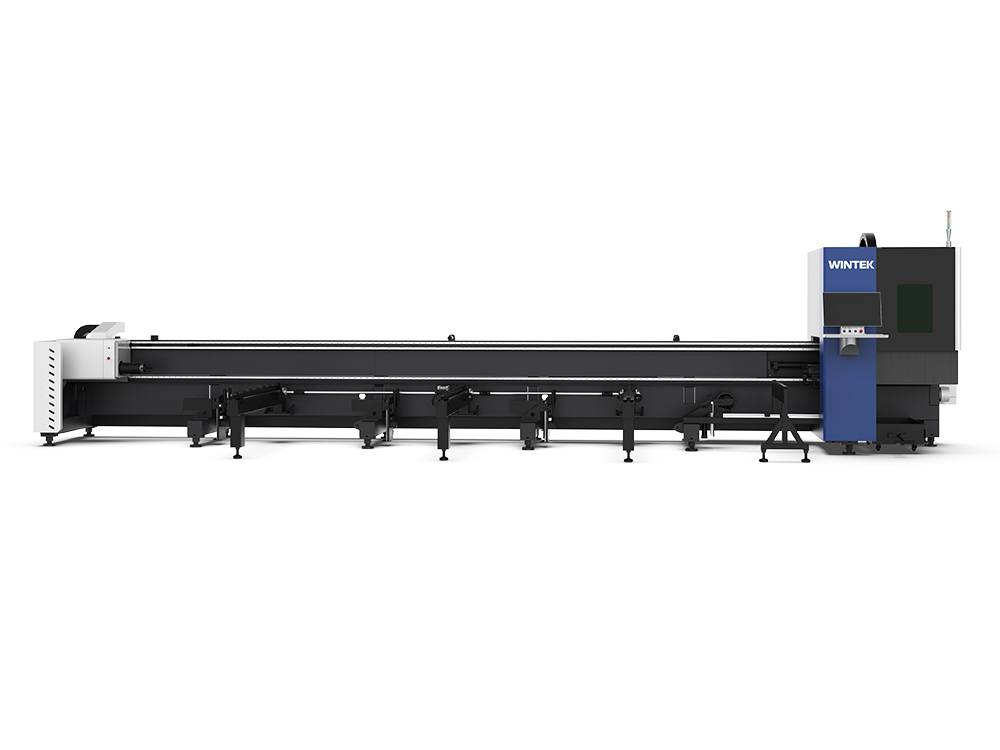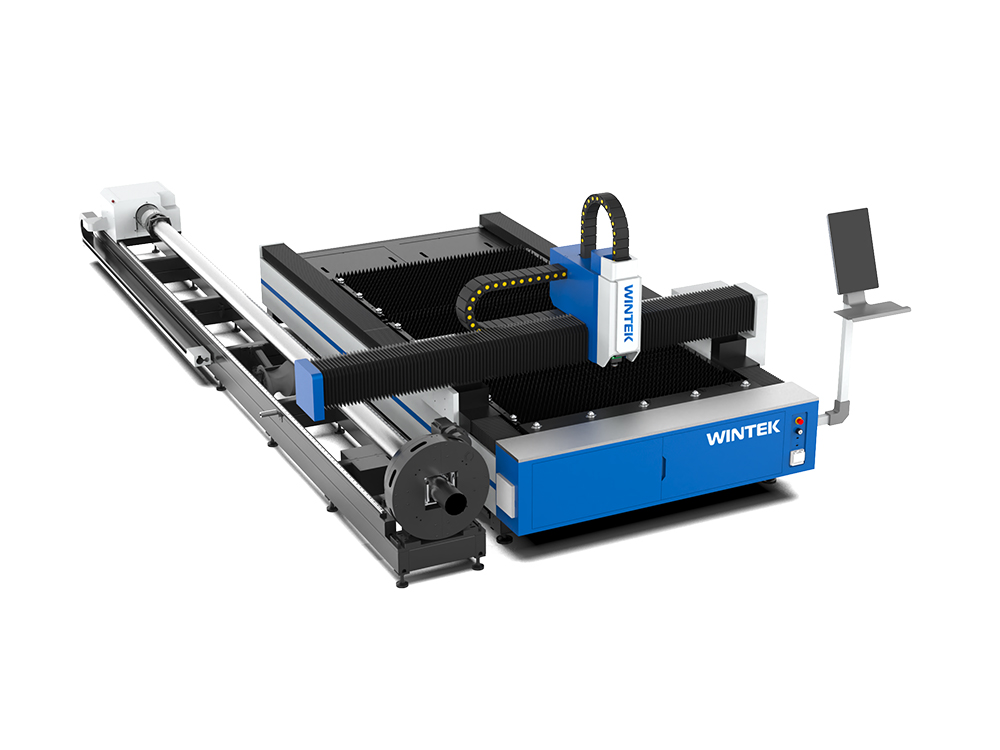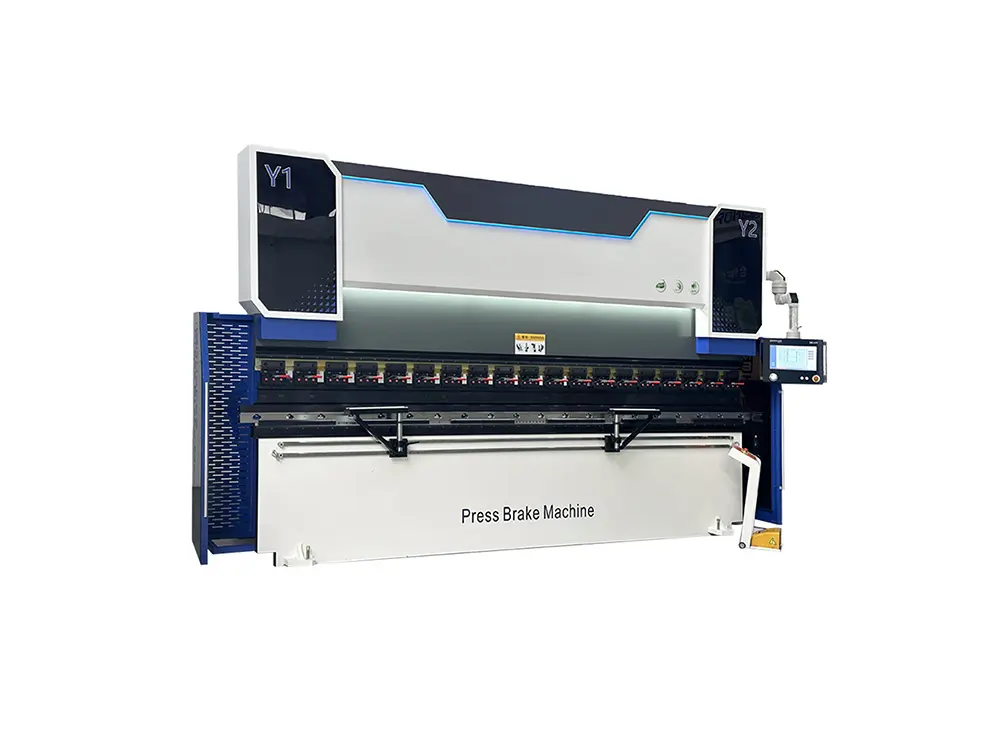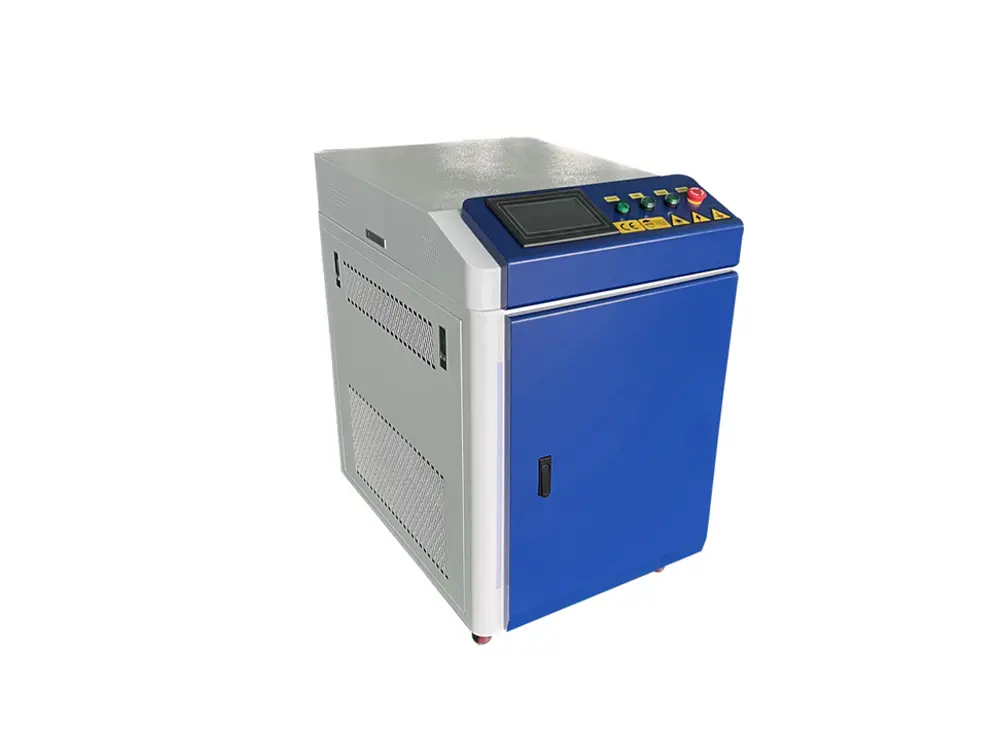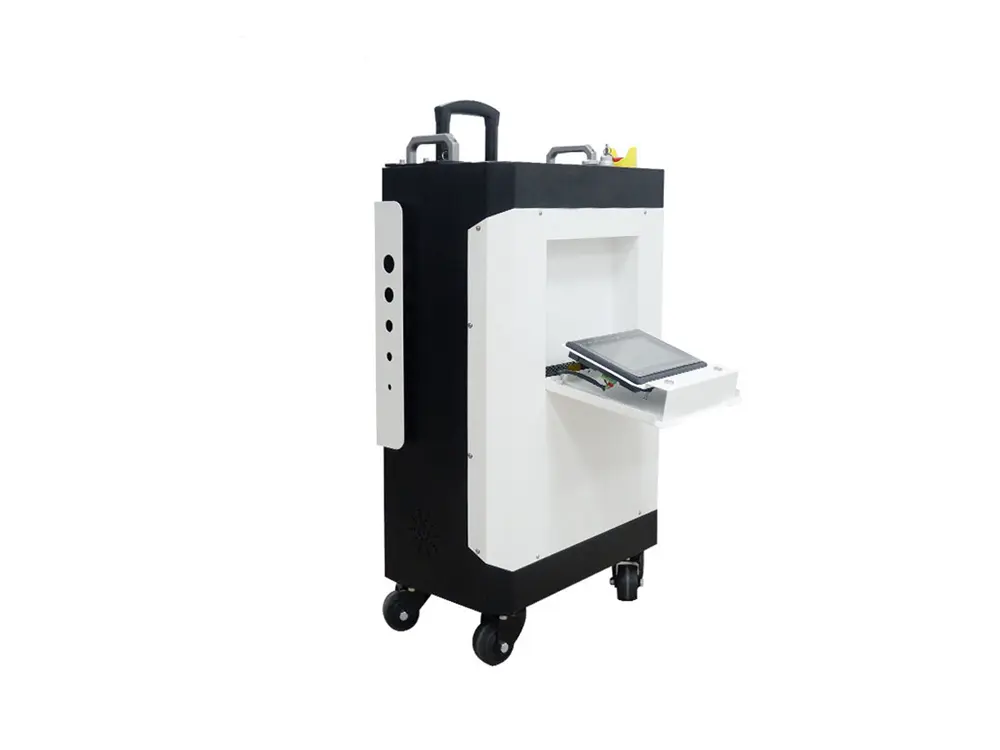Introduction
Laser cutting machines are known for their high precision, fast cutting speeds, and versatility, making them an ideal choice across various industries. They deliver clean, smooth cuts with minimal material waste, ensuring efficiency and cost-effectiveness. With non-contact cutting technology, these machines experience less wear and require lower maintenance.
Moreover, advanced models integrate CNC automation, enhancing accuracy, repeatability, and productivity in modern manufacturing processes. This makes them highly sought after across various industries.
But how many types of laser cutting machines are there? Let’s dive into this topic.
Different Types of Laser Cutting Machines
There are three common laser cutting machines on the market: fiber laser cutting machine, CO2 laser cutting machine and YAG laser cutting machine.
1. Fiber Laser Cutting Machine
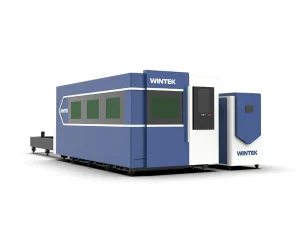
The fiber laser cutting machine uses a high-energy-density laser beam to conduct through optical fiber to cut metal materials. Its working principle is to generate high-energy laser light through a laser, transmit it to the cutting head through optical fiber, and then focus it on the surface of the material, causing the material to melt or vaporize instantly, thereby achieving the purpose of cutting. Compared with traditional cutting methods, this cutting method has higher precision, faster speed and better cutting quality.
Fiber optic transmission offers high flexibility, fast speed, fewer failure points, low maintenance costs, easy maintenance, and a high photoelectric conversion rate. Laser cutting machines can be widely used for cutting various metal materials, including stainless steel, carbon steel, aluminum, brass, copper, titanium, and galvanized steel, etc.
Fiber lasers offer significant advantages over CO₂ lasers, including faster cutting speeds, higher energy efficiency, and lower maintenance costs. Their ability to generate a more focused and intense laser beam allows for rapid and precise cutting of various metals. With advanced automation and CNC integration, fiber laser cutting machines increase productivity and enable a seamless and precise manufacturing process.
2. Co2 Laser Cutting Machine
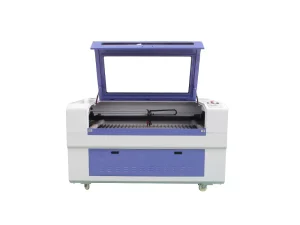
CO₂ laser cutter uses carbon dioxide laser as the light source to achieve high-precision cutting of non-metal materials. They offer advantages such as fast cutting speed, high accuracy, smooth cutting edges, minimal thermal impact, and non-contact processing. The whole machine adopts an integrated design, occupies a small area, and is flexible and convenient to operate.
Equipped with an intelligent control system, it supports multiple functions such as laser cutting, laser engraving, and laser punching. It is suitable for a variety of materials such as cloth, leather, paper, and wood products. It has multiple functions and a wide range of uses. With its super processing capabilities and super high cost performance, it continues to lead in sales in many industries such as shoes, clothing, home furnishings, 3C digital, advertising decoration, and craft gifts.
3. YAG Laser Cutting Machine
YAG laser cutting equipment is cheap and stable. Compared with CO₂ lasers, YAG lasers have shorter wavelengths and better focusing performance. They are mainly used for drilling, spot welding, thin plate cutting, etc.
Now, YAG laser cutting machines can only reach small and medium power below 1000W. The compact overall optical path design determines the compactness of the equipment, which is more stable in performance, small in footprint, and not affected by environmental factors. The overall optical path system is stable, so the cutting performance is stable, cost-effective, low in use cost, and high cutting efficiency.
These are the advantages of YAG laser cutting machine. Of course, it also has its shortcomings. The cutting quality and cutting speed are not as good as those of fiber laser cutting machine. The lifespan is also shorter than that of fiber laser cutting machine, and maintenance is relatively more important.
| Feature | Fiber Laser Cutting Machine | CO₂ Laser Cutting Machine | YAG Laser Cutting Machine |
| Laser Source | Fiber-optic laser | Gas laser | Solid-state laser |
| Wavelength | ~1.06 μm | ~10.6 μm | ~1.06 μm |
| Material Suitability | Metals (steel, aluminum, brass, copper, etc.) | Non-metals (wood, acrylic, plastic) and some metals | Metals and some non-metals |
| Cutting Speed | Fastest | Medium | Slow |
| Energy Efficiency | High (30-50%) | Low (10-15%) | Low (3-5%) |
| Maintenance Cost | Low | High | High |
| Precision & Quality | High
(fine cuts, smooth edges) |
Medium
(heat-affected zone is larger) |
High
(good for thin metals) |
| Initial Cost | High | Medium | Low to Medium |
| Best for | Metal cutting | Non-metal cutting | Specialty application |
| Durability & Lifespan | Longest lifespan | Shorter lifespan | Moderate lifespan |
Other Classification Methods
1. Classified By Cutting Material
Metal laser cutting machines are specifically designed for processing various metal materials, such as stainless steel, carbon steel, aluminum, copper, and titanium. They use high-power laser sources like fiber lasers for precise, high-speed cutting.
Non-metal laser cutting machines are designed for engraving materials such as wood, acrylic, plastic, fabric, leather, paper, and glass. They typically use CO₂ lasers due to their ability to efficiently process organic and synthetic materials.
2. Classified By Sheet Size
Standard format laser cutting machine: suitable for small and medium-sized processing, with moderate cutting area.
Large format laser cutting machine: suitable for large processing, with large cutting area, suitable for large format materials.
Conclusion
Laser cutting machines are essential in modern manufacturing, offering precision, speed, and versatility across various industries. There are three main types: fiber lasers, CO₂ lasers, and YAG laser cutters. Each type has unique advantages based on its laser source, material compatibility, and efficiency. Fiber lasers excel in cutting metals with high speed and energy efficiency, CO₂ lasers are ideal for non-metal materials due to their long wavelength, and YAG lasers are suited for drilling, spot welding, thin plate cutting, etc.
Choosing the right laser cutting machine depends on factors such as material type, cutting requirements, efficiency, and cost. As laser technology continues to evolve, advancements in automation, power efficiency, and precision will further enhance these machines’ capabilities, making them even more indispensable in industries like aerospace, automotive, electronics, and metal fabrication.
Explore our products to find the perfect machine for your needs. Contact our sales team for detailed information!

